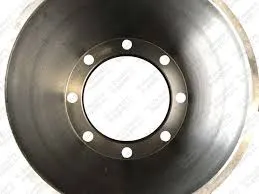
-
 Afrikaans
Afrikaans -
 Albanian
Albanian -
 Amharic
Amharic -
 Arabic
Arabic -
 Armenian
Armenian -
 Azerbaijani
Azerbaijani -
 Basque
Basque -
 Belarusian
Belarusian -
 Bengali
Bengali -
 Bosnian
Bosnian -
 Bulgarian
Bulgarian -
 Catalan
Catalan -
 Cebuano
Cebuano -
 Corsican
Corsican -
 Croatian
Croatian -
 Czech
Czech -
 Danish
Danish -
 Dutch
Dutch -
 English
English -
 Esperanto
Esperanto -
 Estonian
Estonian -
 Finnish
Finnish -
 French
French -
 Frisian
Frisian -
 Galician
Galician -
 Georgian
Georgian -
 German
German -
 Greek
Greek -
 Gujarati
Gujarati -
 Haitian Creole
Haitian Creole -
 hausa
hausa -
 hawaiian
hawaiian -
 Hebrew
Hebrew -
 Hindi
Hindi -
 Miao
Miao -
 Hungarian
Hungarian -
 Icelandic
Icelandic -
 igbo
igbo -
 Indonesian
Indonesian -
 irish
irish -
 Italian
Italian -
 Japanese
Japanese -
 Javanese
Javanese -
 Kannada
Kannada -
 kazakh
kazakh -
 Khmer
Khmer -
 Rwandese
Rwandese -
 Korean
Korean -
 Kurdish
Kurdish -
 Kyrgyz
Kyrgyz -
 Lao
Lao -
 Latin
Latin -
 Latvian
Latvian -
 Lithuanian
Lithuanian -
 Luxembourgish
Luxembourgish -
 Macedonian
Macedonian -
 Malgashi
Malgashi -
 Malay
Malay -
 Malayalam
Malayalam -
 Maltese
Maltese -
 Maori
Maori -
 Marathi
Marathi -
 Mongolian
Mongolian -
 Myanmar
Myanmar -
 Nepali
Nepali -
 Norwegian
Norwegian -
 Norwegian
Norwegian -
 Occitan
Occitan -
 Pashto
Pashto -
 Persian
Persian -
 Polish
Polish -
 Portuguese
Portuguese -
 Punjabi
Punjabi -
 Romanian
Romanian -
 Russian
Russian -
 Samoan
Samoan -
 Scottish Gaelic
Scottish Gaelic -
 Serbian
Serbian -
 Sesotho
Sesotho -
 Shona
Shona -
 Sindhi
Sindhi -
 Sinhala
Sinhala -
 Slovak
Slovak -
 Slovenian
Slovenian -
 Somali
Somali -
 Spanish
Spanish -
 Sundanese
Sundanese -
 Swahili
Swahili -
 Swedish
Swedish -
 Tagalog
Tagalog -
 Tajik
Tajik -
 Tamil
Tamil -
 Tatar
Tatar -
 Telugu
Telugu -
 Thai
Thai -
 Turkish
Turkish -
 Turkmen
Turkmen -
 Ukrainian
Ukrainian -
 Urdu
Urdu -
 Uighur
Uighur -
 Uzbek
Uzbek -
 Vietnamese
Vietnamese -
 Welsh
Welsh -
 Bantu
Bantu -
 Yiddish
Yiddish -
 Yoruba
Yoruba -
 Zulu
Zulu
Feb . 20, 2025 08:31
Back to list
glazed drum brake shoes
Glazed drum brake shoes can significantly impact the driving experience, safety, and performance of vehicles, marking an important topic for both automotive enthusiasts and professionals. In the domain of automotive technology, understanding the nuances of glazed brake shoes involves exploring their causes, effects, and remedies while ensuring a vehicle remains efficient and reliable.
Trustworthiness and authoritativeness in brake maintenance rely heavily on using appropriate diagnostic tools and following stringent safety protocols. Modern advancements in automotive diagnostics provide computer-assisted tools that can offer comprehensive analytics of brake performance, heat distribution, and wear patterns, enhancing the accuracy of assessments. Mechanics and service centers should remain current with training provided by automotive institutes and manufacturers, ensuring familiarity with evolving technologies and practices. Another aspect of managing the risk of glazing involves preventive measures. Educating drivers on proper braking techniques can extend the life of drum brake shoes and enhance overall vehicle safety. Encouraging the use of engine braking, especially on steep declines, and maintaining safe driving speeds contributes significantly. Additionally, regular maintenance checks every few thousand miles aid in early detection of potential issues, preemptively addressing them before they escalate. The immersive expertise required for handling glazed drum brake shoes isn't limited to the mechanical side; it encompasses the strategic understanding of product quality, the ability to anticipate driver behavior, and proactive maintenance strategies. This holistic approach ensures that vehicles maintain peak performance and demonstrate the reliability trusted by owners and required by road safety standards. In summary, glazed drum brake shoes pose a genuine concern for any vehicle's braking system. By leveraging expertise, timely diagnostics, and preventive strategies, automotive professionals can not only mitigate the risks associated with glazing but also solidify their position as trusted partners in vehicle maintenance, fostering a safer driving environment for all.


Trustworthiness and authoritativeness in brake maintenance rely heavily on using appropriate diagnostic tools and following stringent safety protocols. Modern advancements in automotive diagnostics provide computer-assisted tools that can offer comprehensive analytics of brake performance, heat distribution, and wear patterns, enhancing the accuracy of assessments. Mechanics and service centers should remain current with training provided by automotive institutes and manufacturers, ensuring familiarity with evolving technologies and practices. Another aspect of managing the risk of glazing involves preventive measures. Educating drivers on proper braking techniques can extend the life of drum brake shoes and enhance overall vehicle safety. Encouraging the use of engine braking, especially on steep declines, and maintaining safe driving speeds contributes significantly. Additionally, regular maintenance checks every few thousand miles aid in early detection of potential issues, preemptively addressing them before they escalate. The immersive expertise required for handling glazed drum brake shoes isn't limited to the mechanical side; it encompasses the strategic understanding of product quality, the ability to anticipate driver behavior, and proactive maintenance strategies. This holistic approach ensures that vehicles maintain peak performance and demonstrate the reliability trusted by owners and required by road safety standards. In summary, glazed drum brake shoes pose a genuine concern for any vehicle's braking system. By leveraging expertise, timely diagnostics, and preventive strategies, automotive professionals can not only mitigate the risks associated with glazing but also solidify their position as trusted partners in vehicle maintenance, fostering a safer driving environment for all.
Prev:
Next:
Latest news
-
What Are Drum BrakesNewsJul.07,2025
-
Understanding Brake Drum MaterialNewsJul.07,2025
-
Semi-Trailer Brake Drum: A Key Component for Extreme Loads and Long-Distance TransportNewsJul.07,2025
-
Drum Brake Pads for SaleNewsJul.07,2025
-
Brake Drums for SaleNewsJul.07,2025
-
Brake Drum ManufacturerNewsJul.07,2025
-
Aluminum Brake Drums: The Future of High-Performance CarsNewsJul.07,2025
